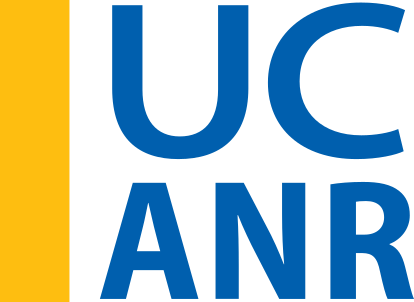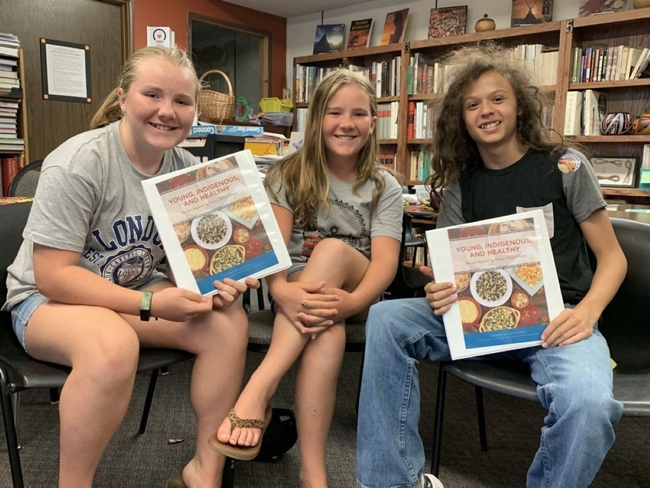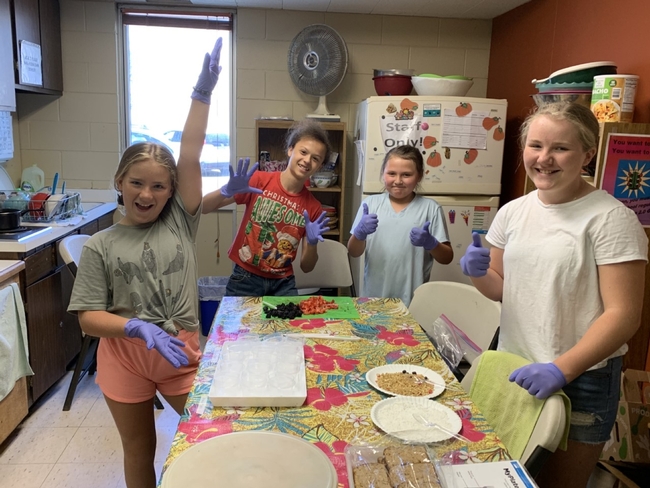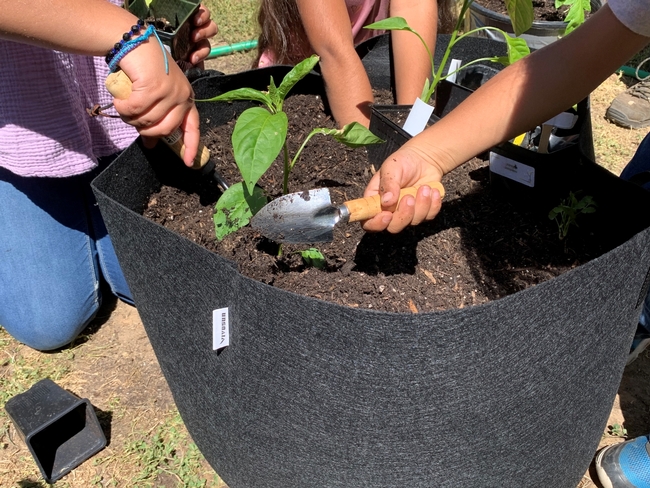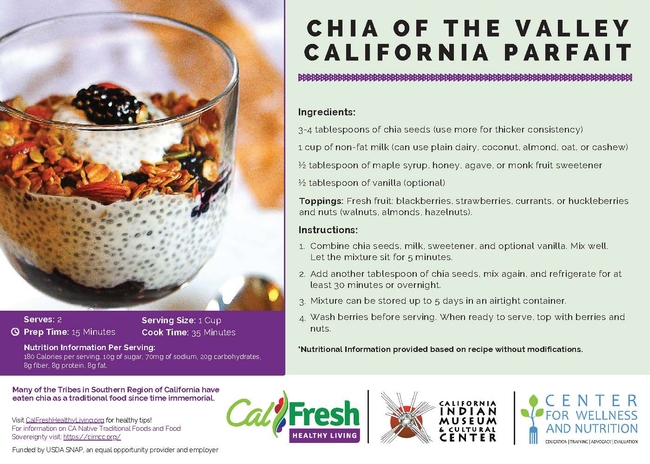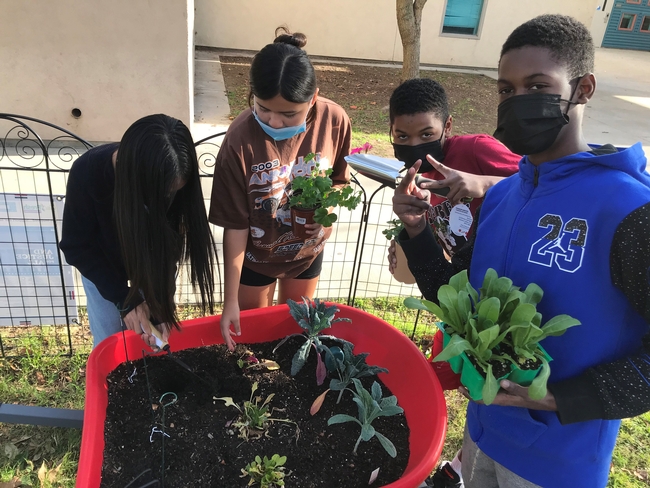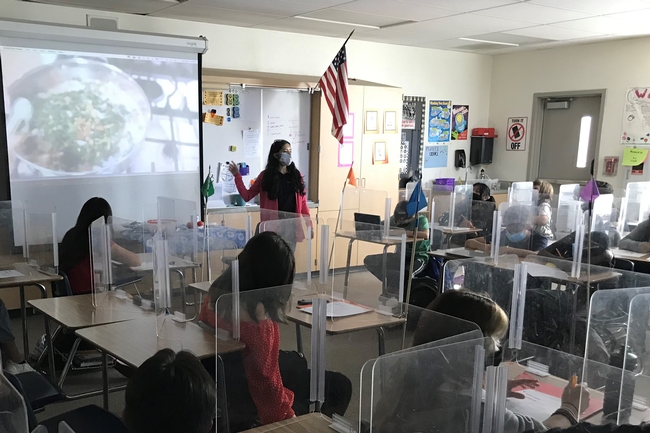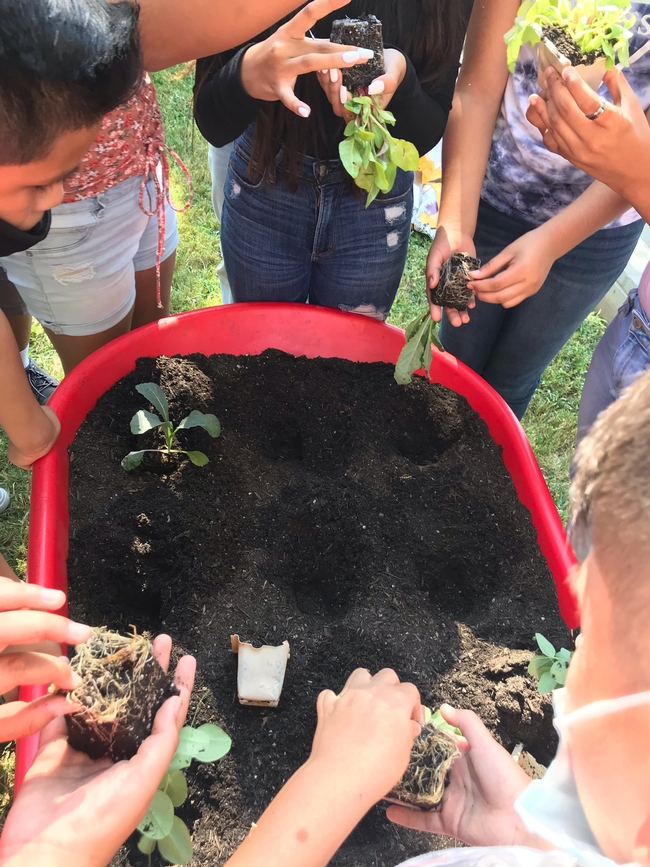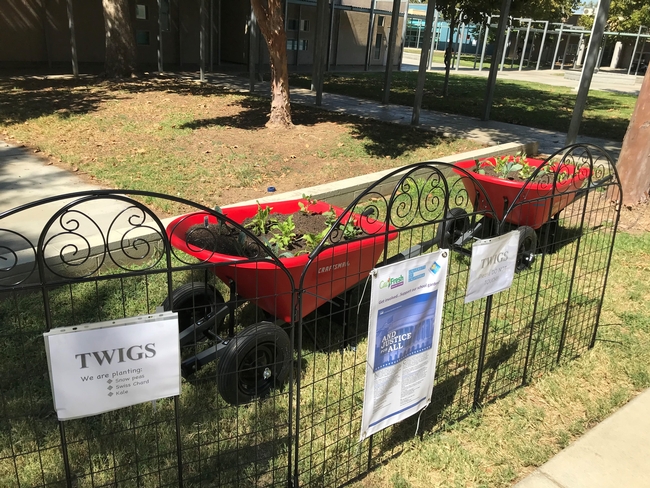- Author: Mike Hsu
Program with Foothill Indian Education Alliance teaches healthy eating to young people of many tribes
More than a tutoring center, the Foothill Indian Education Alliance facility in Placerville also provides cultural activities for youth in El Dorado and Amador counties affiliated with a broad diversity of Native American tribes.
In addition to traditional crafts like drum- and jewelry-making, the center began offering a food component last summer, through a partnership with CalFresh Healthy Living, University of California – one of the agencies in the state that teaches nutrition to people eligible for SNAP (Supplemental Nutrition Assistance Program).
“A lot of the kids, because they don't live on a reservation or their family might not be connected to a local tribe, don't know a lot of their history or their foods,” said Cailin McLaughlin, nutrition educator for CalFresh Healthy Living, UC, based at the UC Cooperative Extension office in El Dorado County. “Food is a good way to explore any heritage because food is at the central point of a lot of cultures and customs – sharing meals and sharing stories behind it.”
Last spring, McLaughlin worked with Hal Sherry, the head tutor at Foothill Indian Education Alliance, to create a new, five-week “summer camp” during which youth would learn about and prepare Native foods in the center's kitchen, primarily with ingredients from its backyard garden.
Sherry said that the experience provided the participants – 10 elementary school students and seven middle or high school students – an important perspective on the interconnectedness of all living things.
“Part of the objective of the program is for them to understand that each one of us is part of the natural order of things, and that we have to do our part to fit into that cycle,” he explained. “There's kind of an ecological lesson that's also being learned…and we don't want to put poisons in our bodies, and we don't want to put poisons in our environment.”
Program combines cultural lessons, nutrition information
For the summer program, McLaughlin selected a curriculum centered on garden-based nutrition, and infused it with elements of Indigenous food ways.
“We predominantly picked ingredients that had cultural significance to Native American communities, so things like blueberries, blackberries, pine nuts, squash, things of that nature,” she said. “So we could feed into the history of that ingredient, why it's important to the Indigenous communities – and then give (the students) the nutritional information about it.”
After the youth prepared chia seed parfaits – from a recipe that is part of a series developed by CalFresh Healthy Living, the California Indian Museum and Cultural Center, and the Center for Wellness and Nutrition – a Foothill Indian Education Alliance staff member shared that Native hunters would eat chia seeds for strength before a long hunt.
Many of the participants had never had chia seeds before, and the parfaits were an “absolute favorite,” in the words of McLaughlin.
“I wish we could have made them more often!” said Lacey, a fifth grader who participates in the center's programs year-round.
In addition to working outside in the garden, Lacey said she also liked cooking in the kitchen during the summer camp – and the fact that the young people could take the lead.
“It was all the kids doing it, but (McLaughlin) was just supervising and making sure we were doing it right – it was really nice,” said Lacey, who identifies as Miwok.
Sharing within families, across tribes
Active participation by the young people is one of the strengths of the program, according to Sherry. He expressed admiration for McLaughlin's engaging teaching style, which eschews “lectures” and instead draws the participants into lively conversations about the nutritional content of the ingredients.
“Hopefully they're going to retain some of that knowledge and information and then remember: ‘You know what, yes, I think I would like to have some corn and some beans tonight, because that's going to help my bones grow strong and my eyesight get better,'” Sherry said. “That's really a big part of what we want them to come away with.”
At the end of the summer program, participants also came away with a binder of recipes from a cookbook of Native American dishes, “Young, Indigenous and Healthy: Recipes Inspired by Today's Native Youth.” James Marquez, director of the Foothill Indian Education Alliance, said he heard from students that they were bringing many of the lessons from the program back to their homes.
“I've heard the same kind of thing from parents and grandparents, who have said how wonderful that was and that kids come back home and have an interest in cooking and trying to serve nutritious meals to their families,” Marquez said.
That crucial sharing of knowledge also happens between and among staff members and students, as the center comprises members of many tribes, from South Dakota Lakota to Navajo.
“We serve Native people, we don't care what tribe they come from – they're all welcome,” Marquez said. “What we do represents a lot of different tribes, so we share information from one tribe to another, and that way people can appreciate everybody and what we have to bring to the table.”
Talia, a sixth grader who participated in the summer program, said that she enjoys that cultural sharing.
“I like how I can learn new things…and how I learn more about the people around me,” she explained. “It's also fun to learn about other people's cultures, and what Native American they are, too.”
McLaughlin went on to partner with Foothill Indian Education Alliance on a “Cooking Academy” program during this past fall, and is planning another spring/summer program for 2023, as well. The ongoing teaching and sharing of food ways is just one part of a long process to recover and rebuild Native American cultural traditions.
“Unfortunately, there was a very concerted effort to obliterate the Native culture on this continent; it was a very intentional, very deliberate effort to just stamp that culture out like it had somehow never existed,” Sherry said. “Now there's a much greater awareness of what a terrible thing that was, and so it's like trying to regrow a new garden over an area that was severely burned…and it's being done all over the country.”
- Author: Mike Hsu
After harvesting and cooking their produce, students ask for seconds of kale
How do you get notoriously finicky sixth graders to eat their leafy greens? Have them grow the vegetables themselves.
Students in Riverside have that unique opportunity through a hands-on gardening and nutrition class at Ysmael Villegas Middle School, with help from CalFresh Healthy Living, University of California Cooperative Extension Riverside County (a part of UC Agriculture and Natural Resources).
“We have middle schoolers asking for seconds and thirds of kale – that's not something that's typical!” said Claudia Carlos, program supervisor for CalFresh Healthy Living, UCCE Riverside, which implements SNAP-Ed locally (the educational arm of the Supplemental Nutrition Assistance Program, formerly known as food stamps).
Growing and tending kale, mint and snap peas in two wheelbarrow gardens on the Villegas campus, the second cohort of students capped their 12-week class with a cooking lesson. A simple recipe combining their kale with tomatoes, onions and coconut milk was a big hit.
“It's one thing to tell youth they should eat healthy, but not until they actually grow the food do they actually take a lot of pride in that food they've grown and harvested,” Carlos explained.
By the end of this school year, about 75 students (in three cohorts) will have taken the class, during which they explore career pathways in gardening, agriculture and nutrition – while cultivating new skills and healthy habits such as choosing nutritious snacks and incorporating exercise into their day. Techniques developed by the UC help encourage effective behavior change.
“In this exploratory class, I've learned how to plant, and take care of plants,” wrote one student, in evaluating the class. “I can use these skills later on in life most likely, and I also learned how to be more healthy.”
Teachers observed that other students also have taken steps to apply their new skills and knowledge.
“They become more confident in themselves and their abilities to make healthy choices for themselves and their families – and to advocate for their parents to buy that kale and actually eat it,” said Daisy Valdez, community education specialist for CalFresh Healthy Living, UCCE Riverside, who is helping teach the class.
Valdez also has been training Villegas teacher Kim Weiss, so that Weiss – a first-year full-time teacher – is empowered to teach future cohorts. Both Valdez and Weiss noticed that nearly all of the youth have been enthusiastic about getting their hands in the soil, watering and weeding regularly – even taking care of the “worm hotel.”
“Students are very invested in the plants, how they are doing and their well-being,” Weiss said. “They ask if they can come back to the class and help care for the plants and worms; students worry about who will take care of the plants and worms after they leave.”
In addition to basic gardening and cooking skills, the class also incorporates lessons about herbs and spices, beneficial insects and pollinators, and cultural dimensions of food. The kale cooking lesson, which recently took place during Black History Month, presented a chance to teach about African food and culinary traditions.
“It allows them to not just connect to the garden but also to connect to their peers and to connect to the world around them,” said Valdez, who added that the garden, planted in a pair of cheerful red wheelbarrows, also beautifies the campus and sparks conversations among their schoolmates about food systems.
The Villegas partnership with CalFresh Healthy Living, UCCE Riverside also benefits the entire school in other ways, with programs reaching hundreds of students and community members. In spring 2021, under Valdez's supervision, students created a “food access board” that shows how to obtain healthy and affordable food through CalFresh EBT, farmers markets, WIC and other resources.
The board, which has been set up in the library, cafeteria and lobby, is seen and used by students and family members. Valdez also engaged parents and the broader community by hosting gardening and nutrition workshops.
This year, Villegas students will have the opportunity to further deepen their cultural connections through a new Youth Participatory Action Research project, in which they explore their personal and family histories through the lens of a meaningful and healthy food item, practice or tradition. Youth will then share their findings with school peers and administrators.
As Carlos noted, these young people will not forget such engaging and immersive experiences with food any time soon. In their evaluations, many students wrote that they learned valuable lessons about compost, care for plants and insects, and healthy eating.
And, as one sixth grader said: “I also learned that kale and coconut milk is amazing!”
